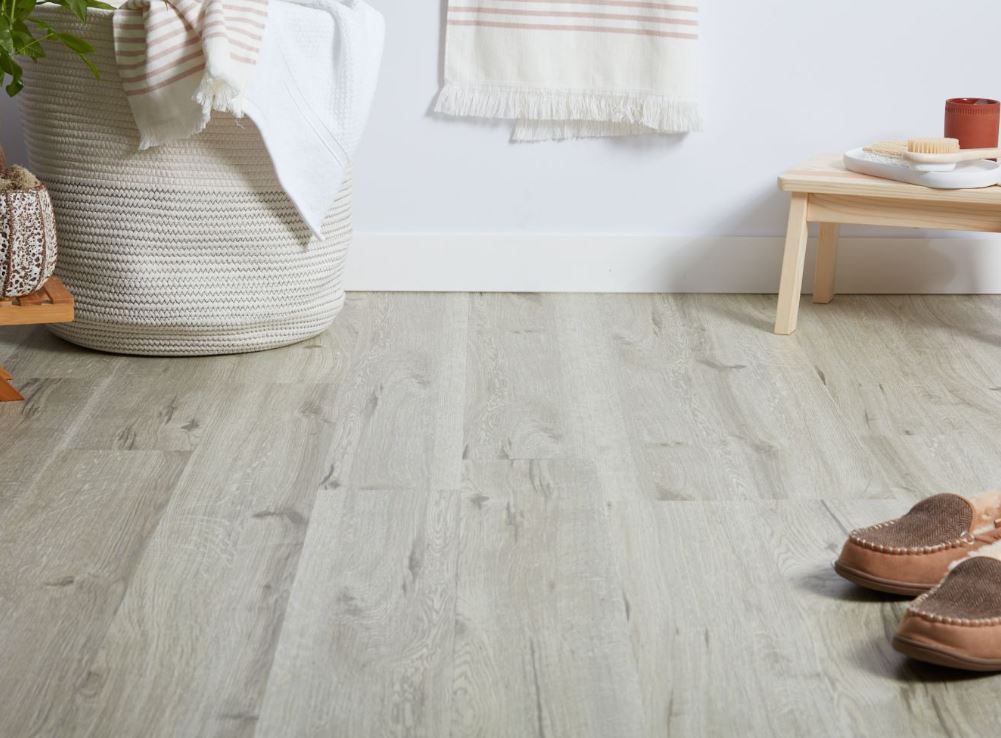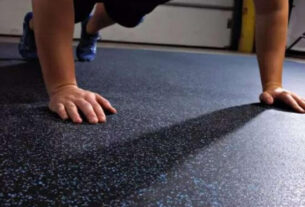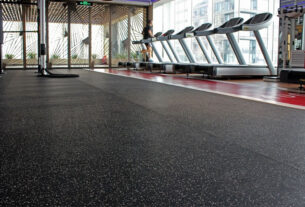Vinyl flooring dubai once seen as a cheap and utilitarian option, has evolved dramatically over the past few decades. Today, it’s one of the most sought-after flooring materials for both residential and commercial spaces. With advancements in technology and design, vinyl flooring has transformed from the classic designs of the 70s and 80s to the stylish and innovative patterns we see today. In this post, we’ll explore the evolution of vinyl flooring and how it has become a go-to choice for modern interiors.
The Birth of Vinyl Flooring
Vinyl flooring was first introduced in the early 20th century as a more affordable alternative to linoleum, which had been a popular flooring material. It quickly gained popularity due to its resilience, low cost, and easy maintenance. During the mid-20th century, vinyl flooring was widely used in kitchens, bathrooms, and other high-traffic areas, with the signature terrazzo-like designs and bold colors of the time.
In the 1950s and 1960s, vinyl became synonymous with affordable and practical home interiors. The designs were often simple, with colors like brown, beige, and muted greens dominating the market. These classic designs were often found in modest homes and apartments, offering an easy-to-clean, durable flooring option that didn’t break the bank.
A Time of Bold Patterns and Colors
The 1970s and 1980s saw a surge in vinyl flooring popularity as it became a standard in mid-century homes. However, this era also marked the first significant shift in vinyl’s design identity. Manufacturers began experimenting with a wider range of patterns and colors, making vinyl a go-to material not just for practicality, but also for bold design statements.
Vinyl flooring of this era was known for its vibrant colors, geometric patterns, and elaborate designs. Think of busy floral patterns, psychedelic colors, and textures that mimicked wood or stone. The rise of the vinyl sheet flooring helped introduce seamless installations, which were particularly appealing for bathrooms and kitchens, where water resistance was a major concern.
While these designs may now feel nostalgic, they reflect a pivotal moment in vinyl flooring history when it started to move away from its purely functional roots and toward a more fashionable option. This period laid the groundwork for future innovations in vinyl design and texture.
The Emergence of Luxury Vinyl Tiles (LVT)
As vinyl flooring continued to evolve, the 1990s saw the emergence of Luxury Vinyl Tile (LVT). LVT offered the durability of vinyl flooring but with a more sophisticated, high-end aesthetic. Unlike traditional sheet vinyl, LVT came in individual tiles that could be installed to mimic the appearance of luxury materials such as wood, stone, or marble.
During this time, vinyl flooring made its way into more upscale homes, offices, and even hotels, where design was as important as function. Homeowners no longer had to sacrifice beauty for practicality. LVT provided a solution that combined the best of both worlds—offering a stylish and affordable alternative to more expensive materials like hardwood or stone.
Technology improvements also played a key role in the transformation of vinyl flooring during this period. Advances in printing technology allowed for more realistic textures and patterns, making it difficult to distinguish vinyl flooring from its natural counterparts. This development opened the door for vinyl to be used in a wide variety of spaces, from high-traffic commercial areas to elegant residential homes.
Vinyl Flooring Becomes a Trendy and Eco-Friendly Choice
In the 2010s, vinyl flooring underwent another major transformation. Manufacturers focused not only on improving design and durability but also on creating more sustainable options. As the demand for eco-friendly products grew, vinyl manufacturers began using recycled materials and incorporating environmentally responsible manufacturing practices.
At the same time, vinyl flooring became more versatile and stylish than ever. Wood-look vinyl became particularly popular, with designs mimicking the look of high-end hardwood floors like oak, walnut, and hickory. The ability to install vinyl in wet areas without worrying about water damage further cemented its status as a popular flooring choice for kitchens, bathrooms, and laundry rooms.
Another major development during this period was the rise of rigid core vinyl flooring. With added durability, stability, and ease of installation, rigid core vinyl made DIY installation accessible to more homeowners than ever. This innovation made vinyl a practical option for everyone, from rental properties to custom-built homes.
- The Modern Vinyl Flooring Revolution
Fast forward to today, and vinyl flooring is not just a utilitarian option but a design-forward material that appeals to a wide range of tastes and budgets. From minimalist Scandinavian-inspired designs to bold, statement-making patterns, vinyl offers something for every home and business.
The current trends in vinyl flooring reflect the growing demand for high-quality aesthetics. Designs are now available in a wide variety of styles, including marble, slate, and even intricate wood grains. Vinyl planks and tiles have become increasingly popular because of their realistic appearance and easy installation methods.
Moreover, vinyl flooring has become more durable and resistant to wear and tear, thanks to innovations like scratch-resistant coatings and enhanced wear layers. Today’s vinyl is designed to stand up to the demands of busy homes, high-traffic areas, and even commercial spaces. Vinyl is now widely used in both residential and commercial applications, thanks to its ability to combine beauty, functionality, and affordability.
Why Vinyl Flooring is Here to Stay
The evolution of vinyl flooring—from its humble beginnings to its modern-day sophistication—has solidified its place in interior design. It’s not just about affordability anymore; it’s about quality, variety, and versatility. Whether you’re looking for something that mimics the rich texture of hardwood or the sleek elegance of marble, vinyl flooring can provide a beautiful and practical solution that fits your style and budget.
As technology continues to advance, it’s exciting to think about what the future holds for vinyl flooring. With increased sustainability efforts and innovations in design, there’s no doubt that vinyl flooring will remain a top contender in the world of interior design for years to come.
Conclusion
Vinyl flooring dubai has come a long way from its early days as a budget-friendly material. Today, it stands as a versatile, stylish, and eco-conscious choice for homeowners and businesses alike. As vinyl continues to evolve, it’s clear that its future is bright, and its design possibilities are limitless.





